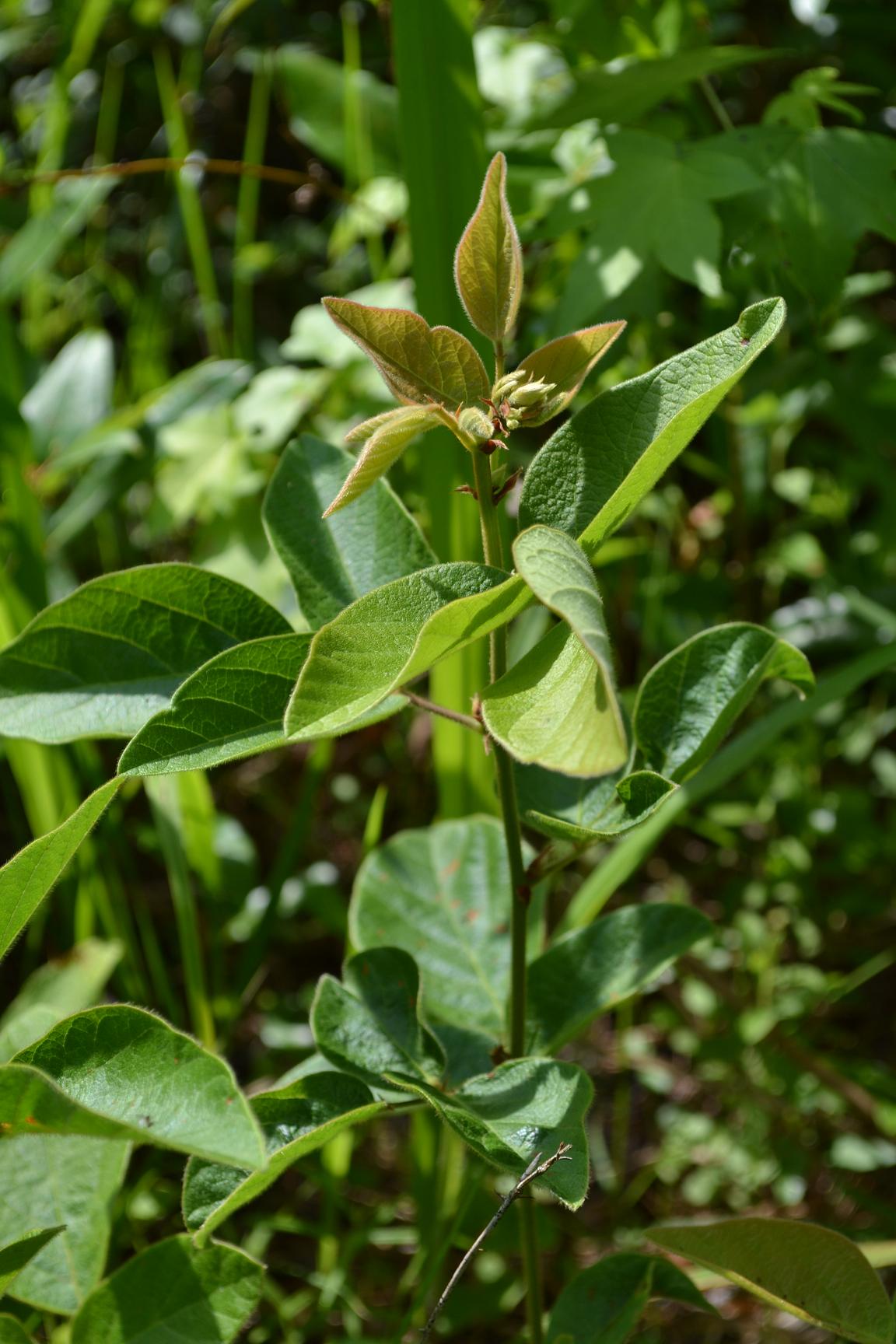Difference between revisions of "Desmodium viridiflorum"
(→Description) |
|||
| Line 19: | Line 19: | ||
==Description== | ==Description== | ||
<!-- Basic life history facts such as annual/perrenial, monoecious/dioecious, root morphology, seed type, etc. --> | <!-- Basic life history facts such as annual/perrenial, monoecious/dioecious, root morphology, seed type, etc. --> | ||
| + | Common Name: velvetleaf ticktrefoil | ||
| + | |||
==Distribution== | ==Distribution== | ||
Distributed widely throughout the eastern U.S. (NRCS Plants Database). | Distributed widely throughout the eastern U.S. (NRCS Plants Database). | ||
Revision as of 17:30, 2 July 2015
| Desmodium viridiflorum | |
|---|---|

| |
| Photo taken by Kevin Robertson | |
| Scientific classification | |
| Kingdom: | Plantae |
| Division: | Magnoliophyta - Flowering plants |
| Class: | Magnoliopsida – Dicotyledons |
| Order: | Fabales |
| Family: | Fabaceae ⁄ Leguminosae |
| Genus: | Desmodium |
| Species: | D. viridiflorum |
| Binomial name | |
| Desmodium viridiflorum (L.) DC. | |

| |
| Natural range of Desmodium viridiflorum from USDA NRCS Plants Database. | |
Contents
Description
Common Name: velvetleaf ticktrefoil
Distribution
Distributed widely throughout the eastern U.S. (NRCS Plants Database).
Ecology
It is a legume with a relatively high nitrogen-fixation rate and acetylene reduction rate (Hendricks et al 1999; Lajeunesse et al 2006).
Habitat
In the southeastern coastal plain it associated with open, frequently burned longleaf, shortleaf pine-oak-hickory, loblolly pine upland native and old-field communities and open upland hardwood forests (Ultisols) (Lajeunesse et al 2006, FSU Herbarium). It occurs in both native (never plowed) areas and in old-field habitats and areas with recent soil disturbance (FSU Herbarium). Occurs on loamy sands and sandy loams (FSU Herbarium).
Phenology
In the southeastern coastal plain t flowers from July-September and fruits July-October.
Seed dispersal
Seed bank and germination
Fire ecology
It is noticeably more abundant in burned plots, as the density in an Oconee National Forest plot, which had no history of burning, was 28 individuals per ha while the densities in two Piedmont National Wildlife Refuge plots, which were burned in the dormant season every 4-5 years, were 2,563 and 3,953 individuals per ha (Hendricks et al 1999). Regularly burned sites are likely essential for the establishment and persistence of D. viridiflorum populations large enough to significantly affect nitrogen availability (Hendricks et al 1999). It needs to have enough moisture; in the event of a drought, water stress is suggested to contribute to loss of leaf area, which reduces the photosynthate available to maintain high nitrogen-fixation rates (Hendricks et al 1999).
Pollination
Use by animals
Diseases and parasites
Conservation and Management
Cultivation and restoration
Photo Gallery
References and notes
FSU herbarium herbarium.bio.fsu.edu
Lajeunesse, S. D., J. J. Dilustro, et al. (2006). "Ground layer carbon and nitrogen cycling and legume nitrogen inputs following fire in mixed pine forests." American Journal of Botany 93: 84-93.
Hendricks, J. J. and L. R. Boring (1999). "N2-fixation by native herbaceous legumes in burned pine ecosystems of the southeastern United States." Forest Ecology and Management 113: 167-177.